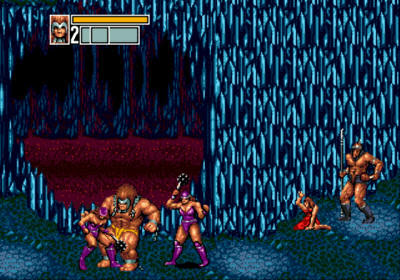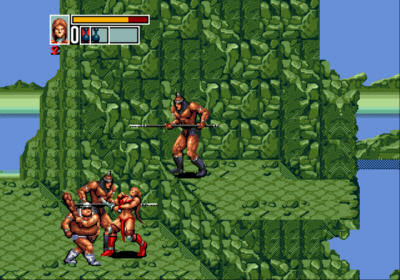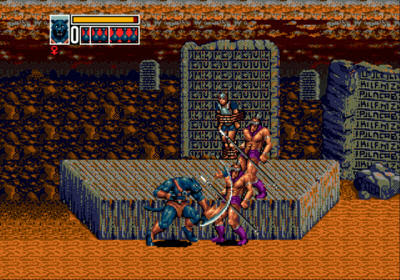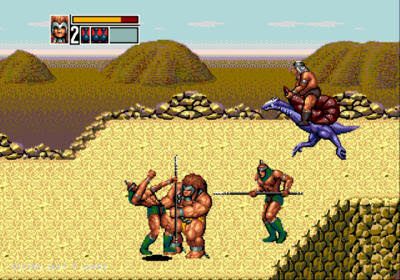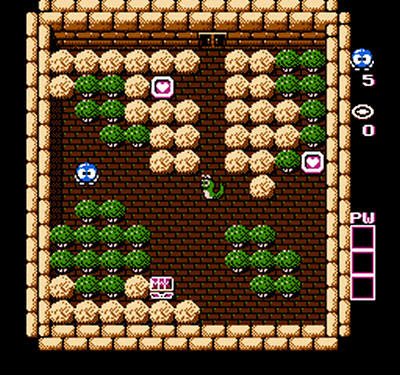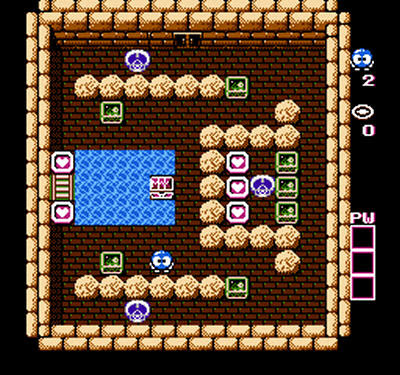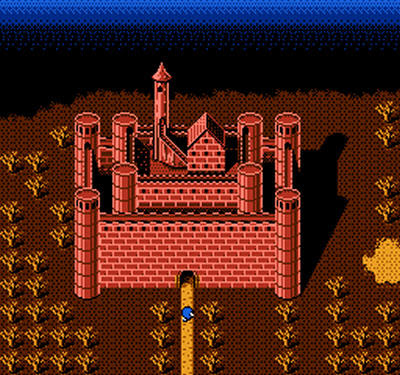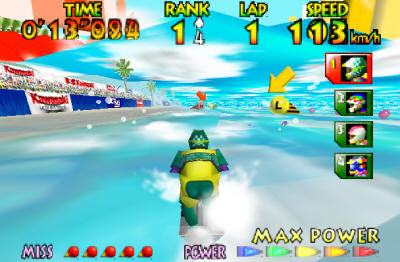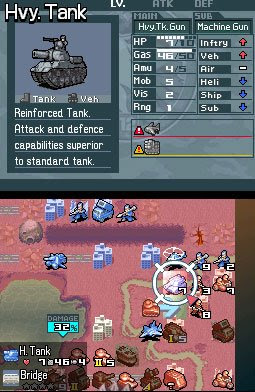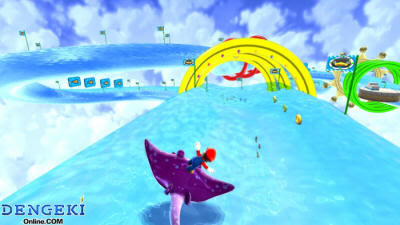
 Every day I take the bus from the Mall of America to downtown Minneapolis and back. I have some time to roam around the lousy place (I really hate shopping malls) before my bus home arrives. Imagine my surprise, then, when I wandered into the game stores this week and discovered Super Mario Galaxy running on the Nintendo Wii kiosk.
Every day I take the bus from the Mall of America to downtown Minneapolis and back. I have some time to roam around the lousy place (I really hate shopping malls) before my bus home arrives. Imagine my surprise, then, when I wandered into the game stores this week and discovered Super Mario Galaxy running on the Nintendo Wii kiosk.Yay! Time flies fast. Suddenly, we're only two weeks away from the game's release, currently set at November 11. And by coincidence, I have a payday around that time, with lots of disposable income to throw around. This is going to be very hard to resist.
I expect many others will share my sentiments. The Wii has retained a high demand since its release a year ago, but many of us are still holding out, still waiting for Nintendo to really show us what this little cream-colored box can do. Well, folks, Super Mario Galaxy is it. I mean, this is it, the real deal, the killer app. This game is going to sell like hotcakes.
Up till now, Nintendo seemed to earn its success on the cheap. They sold enough Wii consoles to become the market leader over Microsoft and Sony, but it never really felt earned. You purchased a Wii as an investment, on the potential for what may come down the wire, instead of what was here now. Not there were a lack of great games, as Wii Sports can attest. It's a hit with whole populations who either wrote off videogames, or were never interested in them in the first place. And I don't anyone really appreciates that just yet.
But Nintendo still needed that killer app, that landmark classic that sets the new standard, raises the bar for games, and hurls the gauntlet down against the competitors. Halo was one such game. So was The Sims, or Tetris, or Sonic the Hedgehog. The most famous of them all was Mario, the cartoon plumber that singlehandedly made Nintendo a household name. Super Mario Brothers did it for the NES, Super Mario World did it for the Super NES, and Super Mario 64 did it for Nintendo 64.
Super Mario Sunshine failed to become Gamecube's great megahit, and for this disappointment the game was dismissed as a failure, a setback. Either gamers expected Mario to revolutionize everything yet again, something grand and new and previously unimagined; or they wanted something safe, another Mario 64 to relive the glory days of 1996. But Nintendo and Shigeru Miyamoto, the father of Mario, would have none of it. He was busily burning through his experimental phase. His Achtung Baby-Zooropa-Pop phase, if you will. He and his creative cabal of wizards fervishly rescinded and reinvented every classic game in their library. The new Mario was completely different. The new Zelda was completely different. The new Metroid was completely different. The psychedelic influence took a warped, unpredictable turn. Luigi's Mansion. Pikmin. Animal Crossing. These were strange oddballs, weird little games. If they didn't connect with the gaming public, too bad. Your loss.
The Gamecube is widely regarded as a failure, and it cemented (for a time) Nintendo's reputation as has-beens. Then videogame retro nostalgia kicked in. Then Nintendo DS happened. Then Nintendo Wii happened. Everyone finally realized that Nintendo was back at the top, but the truth is that they never really left. They just needed to wander around a little, in search of some much-needed creativity to share with the rest of us. Dylan did just that. U2 did just that. It's just the way of things.
And somewhere along the way, Sony lost their minds. How else to explain the Playstation 3, the biggest and greatest testament to hubris and absurdity the videogame industry had ever seen? Sony was as close to achieving permanent dominance as anyone could hope. The Playstation brand was videogames. They were untouchable. And then some executive decided that it wasn't enough for us to throw out our old games consoles and buy new ones. We had to throw our DVD libraries away and repurchase the deluxe version.
The result was a $600 games console that also pushed a new DVD format nobody wanted. Sony's response was just like Tom Friedman's attitude toward Iraq - "suck on this." No, thanks. I don't quite feel like taking out a second mortgage on my home to play games and watch movies. I'm already doing fine by that, thank you very much.
Sony expected the kind of blind loyalty you only find in nation states and organized religions. Hell, they've already got the massive monolith. Now hurry up and evolve, you stupid apes. What a load. Now instead of playing God, Sony is scrambling to fend off open rebellion from their stockholders, and the continuing desertion by videogames' software developers. The knives are out and there's blood in the water. You know how this story ends.
And in the midst of all this rides Nintendo, freshly minted the hero and savior of games. Just like one of Shakespeare's tragedies. Now here comes Mario to defeat Richard III and bring peace to the mushroom kingdom.
Fast forward to Halloween 2007, and the imminent return of Mario. I find myself in front of a Nintendo Wii kiosk, playing Super Mario Galaxy and having the time of my life. There's no question this will be the must-play game of the holiday season. Last year, Wii Sports was the one you took with you to Thanksgiving to play with the family. This year it's all Mario.
I've noticed that these Wii stations are finally allowing controller hook-ups, and I've often harbored conspiracy theories about that. For the past year, you could walk into any electronics store and see a Wii station. But you couldn't play any games. There were no controllers to handle. Instead of seeing an actual game on the telescreen, you would see a series of informational commercials. Mostly they showed other people, hip, young college types, playing and jostling around and laughing about. Occassionally you would see a few seconds of an actual game, but only just a few scattered moments. Lots of teasing. Nintendo had finally mastered the art of seduction. It's the oldest rule of show business - always leave 'em screaming for more. Add in a yearlong drought of consoles (a masterful mix of tactical engineering and dumb luck), and Nintendo successfully smooth-talked its way to the top.
Now they're finally letting their guard down and showing us the goods. About damned time. And, by the most amazing coincidence, this all times in perfectly with the second generation of Wii titles, games like Metroid Prime 3 and Super Mario Galaxy. By now all you will see is Mario, endless stars, happy bunnies, yellow stars, and endless colored gems. It's like something Syd Barrett conjured in his dreams. Astronomy Domine - the greatest trip in the galaxy.
At the beginning, Mario awakens to find himself lying on a small planetoid, surrounded by a number of of planets and asteroids and odd shaped things. Three white rabbits invite him to play with them in the craters and the flowers, and they hop along gleefully, up, across, down, at all sorts of strange angles. Huh. Imagine that. We've just barely started, and already the LSD trip has kicked in. I always found it amazing that Nintendo were such prudes when it came to depictions of violence (Mortal Kombat, Grand Theft Auto), and yet Miyamoto's games are so obviously acid-drenched. Mario is the Terence McKenna of the videogame realm. It's all so laughably subversive.
The Super Mario games remain the pillars of game design, and Galaxy pushes those ideas to its limits. Remember the way Stanley Kubrick used angles and perspective to mess with your head in 2001: A Space Odyssey? There's no such thing as a gravitational "up" in outer space, so why not just run everywhere? This game is exactly like that. You walk and run over, across, and around various planets, and the camera just leaves you behind. All too often, you're controlling a Mario who's upside-down, or at an odd angle. It's here that you realize the joke. For years, games have been selling themselves as 3D, as inhabiting virtual worlds, but that's never been the case. At the end of the day, you're only moving left or right, up or down. You're still walking around in the same old boring rooms. Miyamoto trips that notion apart. You want a real three-dimensional videogame? Well, here it is, kids. Wrap your minds around this.
This is a game that oozes imagination, because it calls up the imagination in your own head. Who hasn't ever dreamt of flying or exploring the stars? Who hasn't ever felt curious? That's always been the Mario trademark. Miyamoto has described his games as gardens, one that you can play around in freely. That sense of wonder, that fun thrill of just goofing off. Wonder if something is hidden in those bushes? Wonder what will happen if you hit those green globes? What is it like underneath the ground, walking around upside-down? Forget about getting from Point A to Point B. That part will solve itself. It's the journey that matters.
If you're wondering how the controls work, I'll lay it out for you. Galaxy uses the Wiimote and Nunchuck. You use the Nunchuck's analog thumbstick to move Mario around. The Z button makes him crouch down, and the smaller C button (sometimes) sets the camera just behind you. The Wiimote uses the A button for jumping, and this is something that really took me a while to settle into. I suppose it's similar to the old controller scheme, joypad on left, button on right, but it still felt a little different to have my hands seperate. My right hand is usually waving around, with the left down at my waist. For the first time in ages, I have to consciously think about which button to press.
Back to the Wiimote. You move around a cursor, with which you can collect colored gems. These are found all over the place, hidden here and there. Sometimes a comet will crash and unleash a few. Every 50 you collect earns you an extra life. There's also another function, and that's used with the B button. You can fire these gems at characters and objects. You can stun a baddie, like our old favorites, the Goombas (they are literally walking mushrooms - again with the subversion). New friends include these yellow stars, who help you along. They also feed on the gems, and you can shoot a stream straight into their mouth. The inevitable surprises result.
Mario has a new spin attack, which you perform by shaking either controller, which is neat fun. This skill is also needed for the giant, hollow stars, which transport you across space to the next planetoid. Just hop up, then shake, and you rocket past. You may even cross another star, which can send you along a new path if your timing is just right. Ahem. I'll try not to spoil too many more secrets. Mario games are like mystery novels with nothing but surprise endings.
The time I spend with the game was very short, only about an hour or two. It was clear that I was just barely started. I had uncovered one galaxy, out of a reported total of 40, unearthed a giant central hub, where a Princess and her minions ask for your help. I found a secret room where you had to run across all of the walls. I saw a green mushroom hidden on the roof of someone's house, and I'm trying to figure out how to get it. Maybe I have to climb that tree somehow.
One thing that really struck out at me was Galaxy's platforming influence. As everyone knows, most of the older, two-dimensional videogames have been all but scrapped in the 3D polygon age, That classic platforming style has become a lost art. But here it lies in Super Mario Galaxy, for all to view. Design elements include things such as moving platforms, moving blocks, long drops into darkness. Perhaps setting the game around spheres brought us back to those roots. There are also moments when the game literally switches to a side-scrolling view. I had one of these discoveries when I landed on a long glass object. It took forever to find an opening inside, but when I snuck in, I found myself running along one of those old-school ant farms. The gravity even shifted about, and Mario ran along the ceiling for a while. Reminded me a lot of a classic NES robot shooter called Metal Storm, which revolved around gravity switches and moving upside down.
Level designs in Super Mario Galaxy are certainly inspired, and even more unhinged and surreal than before. I can't wait to see what the Burning Man crowd thinks of this one. I'll expect to find Terence McKenna's self-transforming machine elves hopping around somewhere. Some worlds revolve around classic platforming structures, and puzzles that call upon the original Super Mario Brothers. One world resembles a giant golf course, complete with putting green. Can't wait to see what happens there. Mario also has some new costumes, including a rediculous bee outfit that should make Jerry Seinfeld jealous. It's one thing to be upstarted by Newman...but Mario? Serenity now!!
Who knows what the normals will think of a game like Mario. It's definitely been turning heads around the game stores at the Megamall. That's always a crucial test. We've been so awash in the same sort of tired games, aimed at the same aging dorks. I've forgotten what it's like to see a videogame that's genuinely, honestly new. I don't remember seeing things like that since I was a kid. Now I want to get my hands on a Nintendo Wii post haste. I imagine a lot of people my age will be thinking the same.
I know it's been said a lot in the past year or two, but now it really and truly does count: Nintendo is back.












+%5B!%5D_001.jpg)
+%5B!%5D_002.jpg)
_001.jpg)



